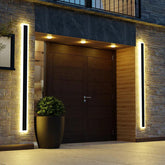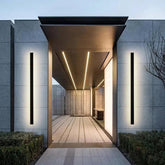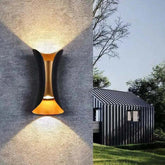Transform Your Home with a Stunning Chandelier: The Ultimate Guide

The Enduring Appeal of the Chandelier
The light is not only a utilitarian aspect, but is also used to create the mood of an entire room. Chandelier: It is one of the most versatile and alluring choices among others. Whether in large ballrooms or intimate dining rooms, chandeliers have survived the tests of time as a functional and ornamental centerpiece. Their capability to fuse the attributes of utility and artistry makes them a very important ingredient of home lighting design.
A chandelier is not just a light: it is an experience. It has the power to transform a room, to elevate its ambiance, and to draw attention to its architectural details. This transfigurative ability is what keeps homeowners, interior designers, and architects using chandeliers when the need to impress is at the forefront.
A Brief History of Chandeliers in Interior Design
The history of the chandelier is a journey through time, from its humble beginnings in medieval castles and cathedrals to its transformation into sophisticated crystal creations in the 17th and 18th centuries. This rich heritage is a testament to the enduring appeal of chandeliers, making them more than just a lighting fixture, but a symbol of wealth and opulence.
With improved manufacturing techniques, the chandeliers became available to other households, not just the elite. Nowadays, they can be found in infinite designs- conventional crystal, rustic wrought iron, sleek contemporary metal, and even minimalist LED designs. This evolution reveals how chandeliers have constantly evolved, keeping step with trends but not losing their primary essence, which is of a statement piece.
Choosing the Right Chandelier for Your Space
Measuring the size of the room and the height of the ceilings
Scale is the first consideration one has to pay to in a chandelier selection. An oversized lamp can dominate the room, whereas a small lamp will be lost in space. One suggestion designers use is to measure the length and width of a room, add those two 4-inch measurements, and use the result as an approximation of the diameter of the chandelier.
Ceiling height also matters a lot. A large chandelier in a room with a low ceiling would be cramped, and high rooms often could use the horizontal style of a multi-tiered or taller finish. Adjustable chains and rods are provided, which allow you flexibility to ensure that the chandelier reaches an optimal level in terms of beauty and practicality.
Style of interior decoration and matching style
Choosing a chandelier that complements the interior style of a room is crucial. A crystal chandelier can add elegance to a classic dining room, while a sleek, simple metal or geometric design can make a contemporary loft stand out. By matching the style of the chandelier with the room's decor, you can achieve a harmonious visual appeal.
By matching style with scenery, a chandelier turns into a part and parcel of the decor, taking its home decor to the next level of visual harmony.
Placement Matters: Where to Install a Chandelier
Dining Rooms
The most popular place, a dining room, can be enhanced with the great use of a chandelier in the middle of the table. Designers advise mounting the fixture 3036 inches above the table to suit most standard ceilings, so that the light is neither too small nor too large to light the whole baking area.
Living Rooms
Chandeliers are conversation pieces in the living room. Whether focused in the room or placed in a strategic position over a coffee table, they ground the room. Drama can also be introduced with a large, oversized chandelier that will also direct attention upwards to highlight vaulted ceilings or architectural details.
Bedrooms
Less traditional, but gaining popularity, are chandeliers in bedrooms. A romantic and stylish soft and ambient chandelier over the bed is a piece of elegance. When used in conjunction with dimmers, it provides flexibility for both task lighting and relaxation.
Doorways and Foyers
First impressions leave a first impression, and a chandelier in an entrance will predetermine the whole tone of your house. Over-the-top chandeliers in grand entryways give a sense of drama, and in smaller entryways, a more intimate feel.
The Rise of Modern Chandelier Designs
The contemporary interior decor trend has blurred the lines of chandelier design. People are still using traditional crystal, but new possibilities have been added, used with materials like brushed nickel, matte black metal, reclaimed wood, and even blown glass.
Straight lines and minimalist designs suit a modern environment, whereas abstract chandeliers can be regarded as pieces of art. The dynamic lighting feature of Smart chandeliers with LED technology provides flexibility in brightness and color temperatures, combining both functions with sustainability. These inventions point to the fact that chandeliers are constantly innovated, but they retain their basic nature as focal points of ornaments.
Installation Considerations for Homeowners
Electrical Setup
Installation of a chandelier involves more than just visually pleasing aesthetics; it involves safe and reliable electrical work. Since most chandeliers weigh more than other standard fixtures, it is important to have a junction box that is robust and supports the weight of the fixture.
Height and placement.
A chandelier must not hinder visibility and movement in any way. In an eating area, eye contact between diners across the table should not be blocked by the fixture. In living rooms or entryways, make sure the chandelier has enough clearance on the floor so as not to bump into one another.
Professional and DIY Installation
While homeowners can install smaller or less complex chandeliers, it's important to consider professional installation for more complicated variants. This not only ensures safety but also guarantees correct alignment, leading to optimal functionality and aesthetics.
Enhancing Atmosphere with a Chandelier
Lighting is the strongest means of creating moods, and chandeliers are particularly adept at it. They are used to give layered lighting, i.e., a mixture of ambient light and decorative sparkle. Combining a chandelier with dimmer switches means flexibility- bright when entertaining, low when dining, or dim when taking dinner.
Not only that, but chandeliers can be used to accentuate architectural elements like crown molding, coffered ceilings, or the large windows. Their reflectivity tends to scatter the light throughout a room, which provides depth to the room.

Chandeliers in Different Interior Styles
Classic Luxury
Crystal chandeliers cannot be taken out of the association with luxury. Their capacity to give off light in the form of shining prisms will give your formal dining room, ballrooms, and high-end houses an extra touch of luxury.
Rustic Charm
Rustic or farmhouse-style homes can be oriented to have chandeliers made of wood and details of wrought iron to provide a homey feel. Candle-style bulbs decorate the old-world twist here.
Modern Minimalism
Geometrically framed chandeliers or exposed bulbs can satisfy the requirements of minimalist interior design, adding a visual variety without overpowering the simplicity of the interior design.
Industrial Appeal
Raw metallic accents, vintage Edison bulbs, and even eye-catching, brash designs strike an industrial chord with such chandeliers and allow them to be used in a modern loft or former warehouse.
Maintenance and Longevity of Chandeliers
Every realistic way of maintaining a chandelier in great condition requires regular cleaning. It can be made dull by dust, fingerprints, and particles in the air. Crystal designs have a clear shine restored by gentle cleaning with a soft cloth or a specialty cleaner. LED chandeliers also have very low maintenance costs with bulbs that have a long life span, reducing the need for frequent replacements.
Appropriate care can keep your chandelier beautiful and fully functioning through decades. House owners consider chandeliers to be an investment, which, through maintenance, can be inherited between generations.
Why the Chandelier is More than Only a Light Fixture
A chandelier is the representation of art, craftsmanship, and ambiance. It gives a narration of the personality of a house and of those who inhabit it. Other than casting light in an area, it also evokes emotion or mood: whether that is the scale of a formal event, the intimacy of an intimate dinner, or the contemplative calm of a relaxing evening at home.
You are not only picking a chandelier, you are creating a memory with the way your chandelier looks, the fabric utilized, or the tones it incorporates. This longstanding strength is what makes chandeliers such a classic and highly sought-after lighting option throughout the ages and in all cultures.
What size chandelier should I choose for my room?
A general rule is to add the length and width of your room in feet, then use that number in inches for the chandelier’s diameter. For example, a 12×14-foot room would suit a 26-inch chandelier.
Can I install a chandelier in a small room?
Yes. Many modern chandeliers are designed specifically for smaller spaces, offering elegance without overwhelming the room. Compact designs with clean lines are ideal for bedrooms, offices, or entryways.
Are chandeliers energy efficient?
Modern chandeliers often incorporate LED technology, which consumes less energy and lasts longer than traditional bulbs. Pairing with dimmers further enhances energy savings.
How do I clean a chandelier safely?
Turn off the power, allow bulbs to cool, and gently wipe surfaces with a microfiber cloth. For crystal chandeliers, use a mild cleaning solution or a dedicated crystal cleaner for best results.
Can a chandelier increase my home’s value?
Yes. A well-chosen chandelier adds sophistication and luxury, which can enhance a home’s perceived value and appeal to potential buyers.






